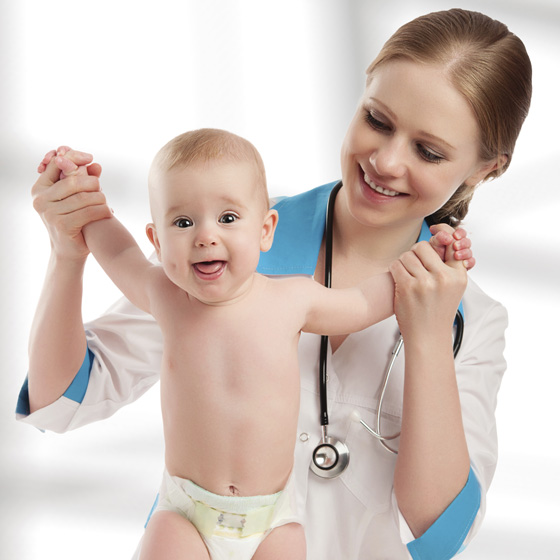A Comparative Analysis of Antibiotics in MSCs Cultures
Abstract:
Mesenchymal stem cells (MSCs) exhibit potential in clinical applications, particularly in tissue engineering, because of their regenerative and immunomodulatory characteristics. The use of antibiotics in the culturing of MSCs is common to avert contamination; nonetheless, their impact on MSCs survival, differentiation, and therapeutic efficacy necessitates meticulous evaluation. This study analyzed the impact of different antibiotics specifically penicillin-streptomycin, gentamicin, chloramphenicol, amphotericin B, and tetracycline on the proliferation, viability, and differentiation of MSCs in adipogenic, osteogenic, and chondrogenic lineages. Although antibiotics lessen contamination hazards, their application can compromise the functionality of MSCs, because elevated doses may cause cytotoxicity and diminish differentiation capability. The effects of antibiotic concentrations on MSCs proliferation and survival, together with molecular insights into the problems of antibiotic-induced differentiation, are thoroughly examined. Antibiotic-free cultures present a feasible alternative, promoting enhanced cell proliferation and lineage specific differentiation, however, they also introduce contamination issues. Enhancing MSCs culture methodologies may require reduced antibiotic concentrations or alternative antimicrobial agents to maintain cell integrity and sterility. This study emphasizes the significance of dosage modifications, investigates antibiotic free systems, and assesses innovative antimicrobial techniques to improve the quality of MSCs in both research and clinical applications.
References:
[1]. Pittenger, M. F., Discher, D. E., Péault, B. M., Phinney, D. G., Hare, J. M., and Caplan, A. I., 2019, Mesenchymal stem cell perspective: cell biology to clinical progress. NPJ Regenerative medicine, 4(1), 22. https://doi.org/10.1038/s41536-019-0083-6
[2]. Bianco, P., Riminucci, M., Gronthos, S., Robey, P. G., 2001, Bone marrow stromal stem cells: nature, biology, and potential applications. Stem cells, 19(3), 180-192. https://doi.org/10.1634/stemcells.19-3-180
[3]. Regmi, S., Pathak, S., Kim, J. O., Yong, C. S., and Jeong, J. H., 2019, Mesenchymal stem cell therapy for the treatment of inflammatory diseases: challenges, opportunities, and future perspectives. European journal of cell biology, 98(5-8), 151041. https://doi.org/10.1016/j.ejcb.2019.04.002
[4]. Dominici, M. L. B. K., Le Blanc, K., Mueller, I., Slaper-Cortenbach, I., Marini, F. C., Krause, D. S., Deans, R. J., Keating, A., Prockop, D. J., and Horwitz, E. M., 2006, Minimal criteria for defining multipotent mesenchymal stromal cells. The International Society for Cellular Therapy position statement. Cytotherapy, 8(4), pp.315-317. https://doi.org/10.1080/14653240600855905
[5]. Arjomandi Rad, A., Zubarevich, A., Osswald, A., Vardanyan, R., Magouliotis, D. E., Ansaripour, A., Kourliouros, A., Sá, M. P., Rassaf, T., Ruhparwar, A. and Sardari Nia, P., 2024, The surgical treatment of infective endocarditis: a comprehensive review. Diagnostics, 14(5), p.464. https://doi.org/10.3390/diagnostics14050464
[6]. Aljeldah, M. M., 2022, Antimicrobial resistance and its spread is a global threat. Antibiotics, 11(8), p.1082. https://doi.org/10.3390/antibiotics11081082
[7]. Banerjee, S., and Argáez, C., 2017, Topical Antibiotics for Infection Prevention: A Review of the Clinical Effectiveness and Guidelines. Canadian Agency for Drugs and Technologies in Health, Ottawa (ON). https://europepmc.org/article/NBK/nbk487430
[8]. Lipsky, B. A., and Hoey, C., 2009, Topical antimicrobial therapy for treating chronic wounds. Clinical infectious diseases, 49(10), pp.1541-1549. https://doi.org/10.1086/644732
[9]. Sutton, M. T., Fletcher, D., Ghosh, S. K., Weinberg, A., van Heeckeren, R., Kaur, S., Sadeghi, Z., Hijaz, A., Reese, J., Lazarus, H. M., and Lennon, D. P., 2016, Antimicrobial properties of mesenchymal stem cells: therapeutic potential for cystic fibrosis infection, and treatment. Stem Cells International, 2016(1), p.5303048. https://doi.org/10.1155/2016/5303048
[10]. Byrnes, D., Masterson, C., Brady, J., Horie, S., McCarthy, S. D., Gonzalez, H., O’Toole, D., and Laffey, J., 2023, Delayed MSC therapy enhances resolution of organized pneumonia induced by antibiotic resistant Klebsiella pneumoniae infection. Frontiers in Medicine. 10, p.1132749. https://doi.org/10.3389/fmed.2023.1132749
[11]. Skubis, A., Gola, J., Sikora, B., Hybiak, J., Paul-Samojedny, M., Mazurek, U., and Łos, M. J., 2017, Impact of antibiotics on the proliferation and differentiation of human adipose-derived mesenchymal stem cells. International Journal of Molecular Sciences, 18(12), p.2522. https://doi.org/10.3390/ijms18122522
[12]. Li, H., and Yue, B., 2019, Effects of various antimicrobial agents on multi-directional differentiation potential of bone marrow-derived mesenchymal stem cells. World Journal of Stem Cells, 11(6), p.322. https://doi.org/10.4252/wjsc.v11.i6.322
[13]. Farzaneh, M., 2021, Concise review; effects of antibiotics and antimycotics on the biological properties of human pluripotent and multipotent stem cells. Current Stem Cell Research & Therapy, 16(4), pp.400-405. https://doi.org/10.2174/1574888X16999201203214425
[14]. Martin, V., Bettencourt, A. F., Santos, C., Fernandes, M. H., and Gomes, P. S., 2023, Unveiling the Osteogenic Potential of Tetracyclines: A Comparative Study in Human Mesenchymal Stem Cells. Cells, 12(18), p.2244. https://doi.org/10.3390/cells12182244
[15]. Ren, Z., Zheng, X., Yang, H., Zhang, Q., Liu, X., Zhang, X., Yang, S., Xu, F., and Yang, J., 2020, Human umbilical-cord mesenchymal stem cells inhibit bacterial growth and alleviate antibiotic resistance in neonatal imipenem-resistant Pseudomonas aeruginosa infection. Innate immunity, 26(3), pp.215-221. https://doi.org/10.1177/1753425919883932
[16]. Johnson, V., Webb, T., Norman, A., Coy, J., Kurihara, J., Regan, D., and Dow, S., 2017, Activated mesenchymal stem cells interact with antibiotics and host innate immune responses to control chronic bacterial infections. Scientific reports, 7(1), p.9575. https://doi.org/10.1038/s41598-017-08311-4
[17]. Pountos, I., Georgouli, T., Henshaw, K., Howard, B., and Giannoudis, P. V., 2014, Mesenchymal Stem Cell physiology can be affected by antibiotics: An in vitro study. Cellular and Molecular Biology, 60(4), pp.1-7. http://cellmolbiol.org/index.php/CMB/article/view/512
[18]. Warner, A. J., Hathaway-Schrader, J. D., Lubker, R., Davies, C., and Novince, C. M., 2022, Tetracyclines and bone: Unclear actions with potentially lasting effects. Bone, 159, p.116377. https://doi.org/10.1016/j.bone.2022.116377
[19]. Han, Y., Li, X., Zhang, Y., Han, Y., Chang, F., and Ding, J., 2019, Mesenchymal stem cells for regenerative medicine. Cells, 8(8), p.886. https://doi.org/10.3390/cells8080886
[20]. Gomes, P. S., Resende, M., and Fernandes, M. H., 2020, Doxycycline restores the impaired osteogenic commitment of diabetic-derived bone marrow mesenchymal stromal cells by increasing the canonical WNT signaling. Molecular and Cellular Endocrinology, 518, p.110975. https://doi.org/10.1016/j.mce.2020.110975
[21]. Llobet, L., Montoya, J., López-Gallardo, E., and Ruiz-Pesini, E., 2015, Side effects of culture media antibiotics on cell differentiation. Tissue Engineering Part C: Methods, 21(11), pp.1143-1147. https://doi.org/10.1089/ten.tec.2015.0062
[22]. Diehm, Y. F., Gazyakan, E., Wang, Y., Siegwart, L. C., Haug, V., Kotsougiani-Fischer, D., Kneser, U., and Fischer, S., 2023, Effective or Harmful—Evaluation of Locally Applied Antibiotics on Adipose Tissue during Lipofilling to the Breast—An In Vitro Study. International Journal of Molecular Sciences, 24(3), p.2323. https://doi.org/10.3390/ijms24032323
[23]. Matsumoto, T., and Mugishima, H., 2009, Non-hematopoietic stem cells in umbilical cord blood. International journal of stem cells, 2(2), pp.83-89. https://synapse.koreamed.org/articles/1158884
[24]. Potapova, I., Plotnikov, A., Lu, Z., Danilo Jr, P., Valiunas, V., Qu, J., Doronin, S., Zuckerman, J., Shlapakova, I. N., Gao, J., and Pan, Z., 2004, Human mesenchymal stem cells as a gene delivery system to create cardiac pacemakers. Circulation research, 94(7), pp.952-959. https://doi.org/10.1161/01.RES.0000123827.60210.72
[25]. Gancheva, M. R., Kremer, K., Breen, J., Arthur, A., Hamilton-Bruce, A., Thomas, P., Gronthos, S., and Koblar, S., 2024, Effect of Octamer-Binding Transcription Factor 4 Overexpression on the Neural Induction of Human Dental Pulp Stem Cells. Stem Cell Reviews and Reports, 20(3), pp.797-815. https://doi.org/10.1007/s12015-024-10678-7
[26]. Yagi, H., Chen, A. F., Hirsch, D., Rothenberg, A. C., Tan, J., Alexander, P. G. and Tuan, R. S., 2020, Antimicrobial activity of mesenchymal stem cells against Staphylococcus aureus. Stem cell research & therapy, 11, pp.1-12. https://doi.org/10.1186/s13287-020-01807-3
[27]. Lee, K. E., Choi, D. H., Joo, C., Kang, S. W., Huh, K. M., and Park, Y. S., 2021, Octanoyl glycol chitosan enhances the proliferation and differentiation of tonsil-derived mesenchymal stem cells. Carbohydrate Polymers, 264, p.117992. https://doi.org/10.1016/j.carbpol.2021.117992
[28]. Bujňáková, D., Čuvalová, A., Čížek, M., Humenik, F., Salzet, M., and Čížková, D., 2020, Canine bone marrow mesenchymal stem cell conditioned media affect bacterial growth, biofilm-associated Staphylococcus aureus and AHL-dependent quorum sensing. Microorganisms, 8(10), p.1478. https://doi.org/10.3390/microorganisms8101478
[29]. Hassan, S. N., and Ahmad, F., 2020, The relevance of antibiotic supplements in mammalian cell cultures: Towards a paradigm shift. Gulhane Medical Journal. 62(4): 224-30. https://doi.org/10.4274/gulhane.galenos.2020.871
[30]. Marrazzo, P., Pizzuti, V., Zia, S., Sargenti, A., Gazzola, D., Roda, B., Bonsi, L., and Alviano, F., 2021, Microfluidic tools for enhanced characterization of therapeutic stem cells and prediction of their potential antimicrobial secretome. Antibiotics, 10(7), p.750. https://doi.org/10.3390/antibiotics10070750
[31]. Kazemi, A., Eshkoor, P. A., Saeedi, P., and Halabian, R., 2022, Evaluation of antioxidant and antibacterial effects of lactobacilli metabolites-preconditioned bone marrow mesenchymal stem cells in skin lesions amelioration. Bioorganic Chemistry, 124, p.105797. https://doi.org/10.1016/j.bioorg.2022.105797
[32]. Mahmoudi, A., Meidany, P., Almahmeed, W., Jamialahmadi, T., and Sahebkar, A., 2024, Stem Cell Therapy as a Potential Treatment of Non-Alcoholic Steatohepatitis-Related End-Stage Liver Disease: A Narrative Review. Current Stem Cell Reports, 10(4), pp.85-107. https://doi.org/10.1007/s40778-024-00241-y
[33]. Noorwali, A., Aljoud, F., Alghamdi, A., Sattami, N., Bashah, T., Noorwali, A., Pushparaj, P. N., and Gauthaman, K., 2024, Evaluation of serum biomarkers after intra-articular injection of rat bone marrow-derived mesenchymal stem cells in a rat model of knee osteoarthritis. Heliyon. 10(21): e39940. https://doi.org/10.1016/j.heliyon.2024.e39940
[34]. Turanli, B., Gulfidan, G., Aydogan, O.O., Kula, C., Selvaraj, G. and Arga, K.Y., 2024. Genome-scale metabolic models in translational medicine: the current status and potential of machine learning in improving the effectiveness of the models. Molecular Omics, 20(4), 234-247. https://doi.org/10.1039/D3MO00152K

